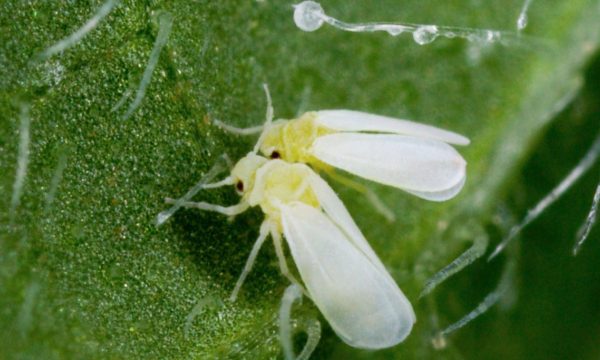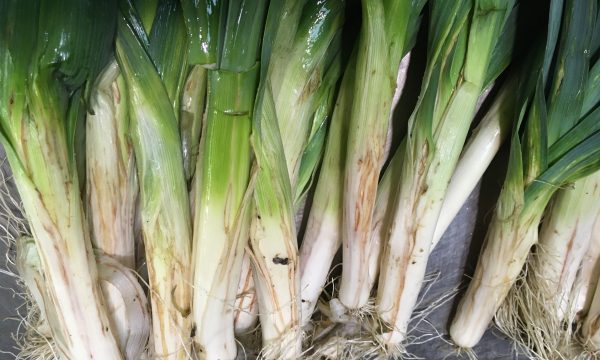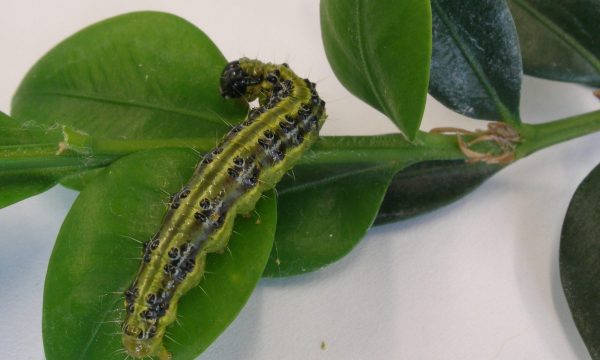General Plant attacker: the biscuit beetle
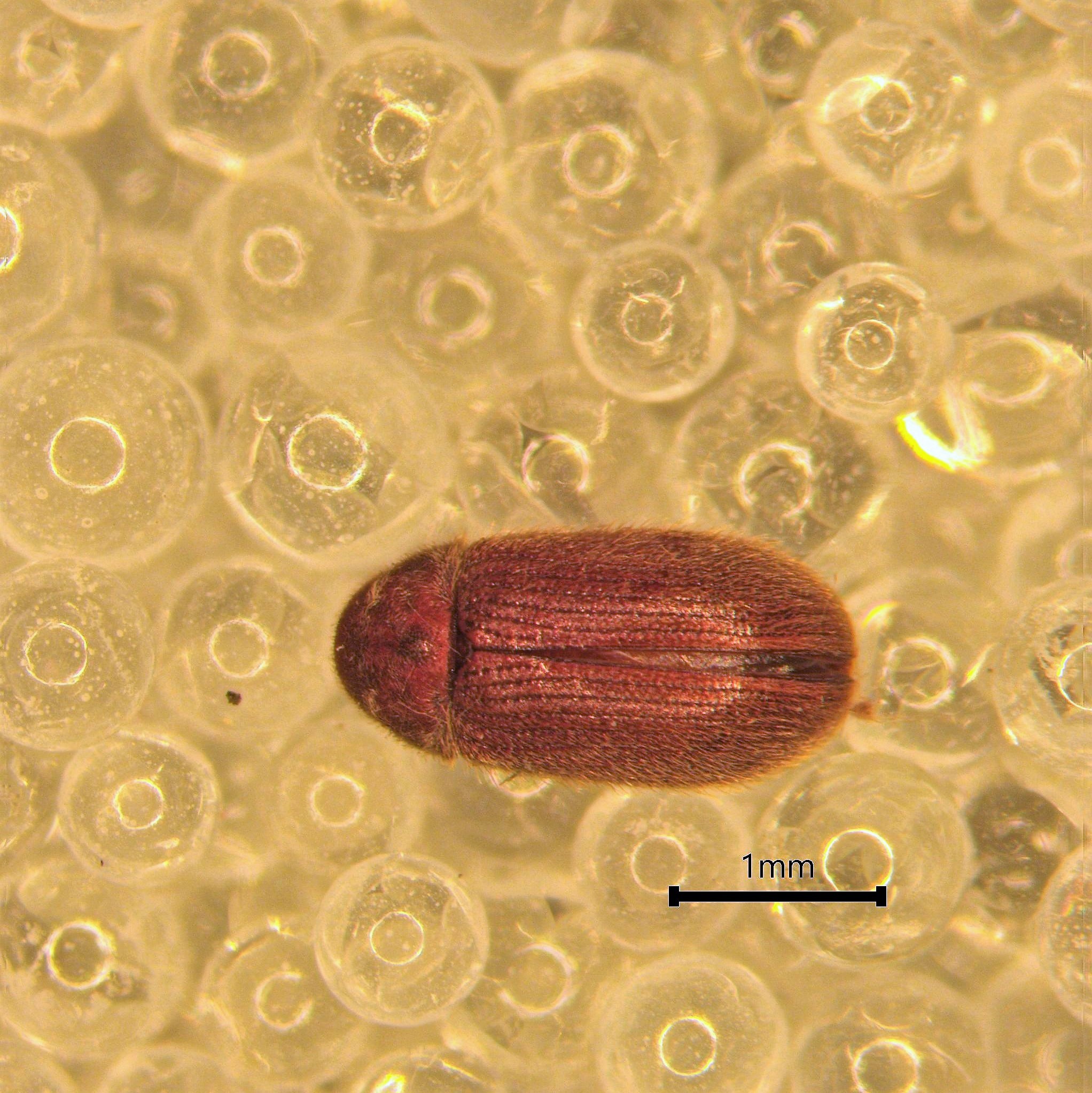
They come back every summer: the little beetles that people send to the Diagnostic Center for Plants. This month we talk about a "pest" that does not feed on plants directly, but rather on starchy plant-based food products: the biscuit beetle, Stegobium paniceum. This is one of the most common pests found in homes. They breed in all kinds of hard, dry starchy products – bread (hence the Dutch name ‘broodkevertje’), rusks, cookies, macaroni and croutons - as well as in dog and cat treats and even cherry pit pads. Biscuit beetles can actually be found anywhere in the house.
How does the biscuit beetle get into the house?
Biscuit beetles can be found all over the world, but they survive best in warm regions with temperate climates. They love heat and can be found in locations where a wide variety of dry food items are stored, such as food storage areas and pantries. They often enter your home without you knowing it via starchy products that you buy at the store which carry beetle eggs or larvae. Not surprisingly, these beetles are most often discovered in the kitchen.
Although the beetles are most noticeable, only the larvae cause damage from feeding. Adult biscuit beetles do not eat but they are good fliers. They are attracted to light, so they are often found on windowsills or in curtains far from where they have developed. The biscuit beetle spreads by laying its eggs on a food source. Once the eggs hatch, the larvae begin to feed. In addition to the foraging damage in the produce itself, the larvae contaminate the food source with feces, molts, and cocoons. The only damage that adult biscuit beetles cause are emergence holes. They have been known to bore through plastic, paper and even aluminum foil.
How can I recognize and distinguish the biscuit beetle from the common woodworm beetle?
The larvae of the biscuit beetle are 0.5 to 5 mm in size; they are white in color with a dark head. They have legs and can move well in the starch source. They are often noticed only after the adult beetles have been encountered. These beetles are very small, and are difficult to distinguish with the naked eye from the common furniture beetle, Anobium punctatum, also known as woodworm. Indeed, both beetle species belong to the same family of death-watch beetles (Anobiidae) and both have a length of about 2 to 4 mm, are oval shaped, have fine hairs and are brown to reddish-brown in color (Figure 1). The neck shield covers the head like a monk's cowl (side view, Figure 2) and the cover shields have fine longitudinal stripes and are covered with fine hairs. The antennae do not have a distinct club and are widely spaced (not shown).
 | 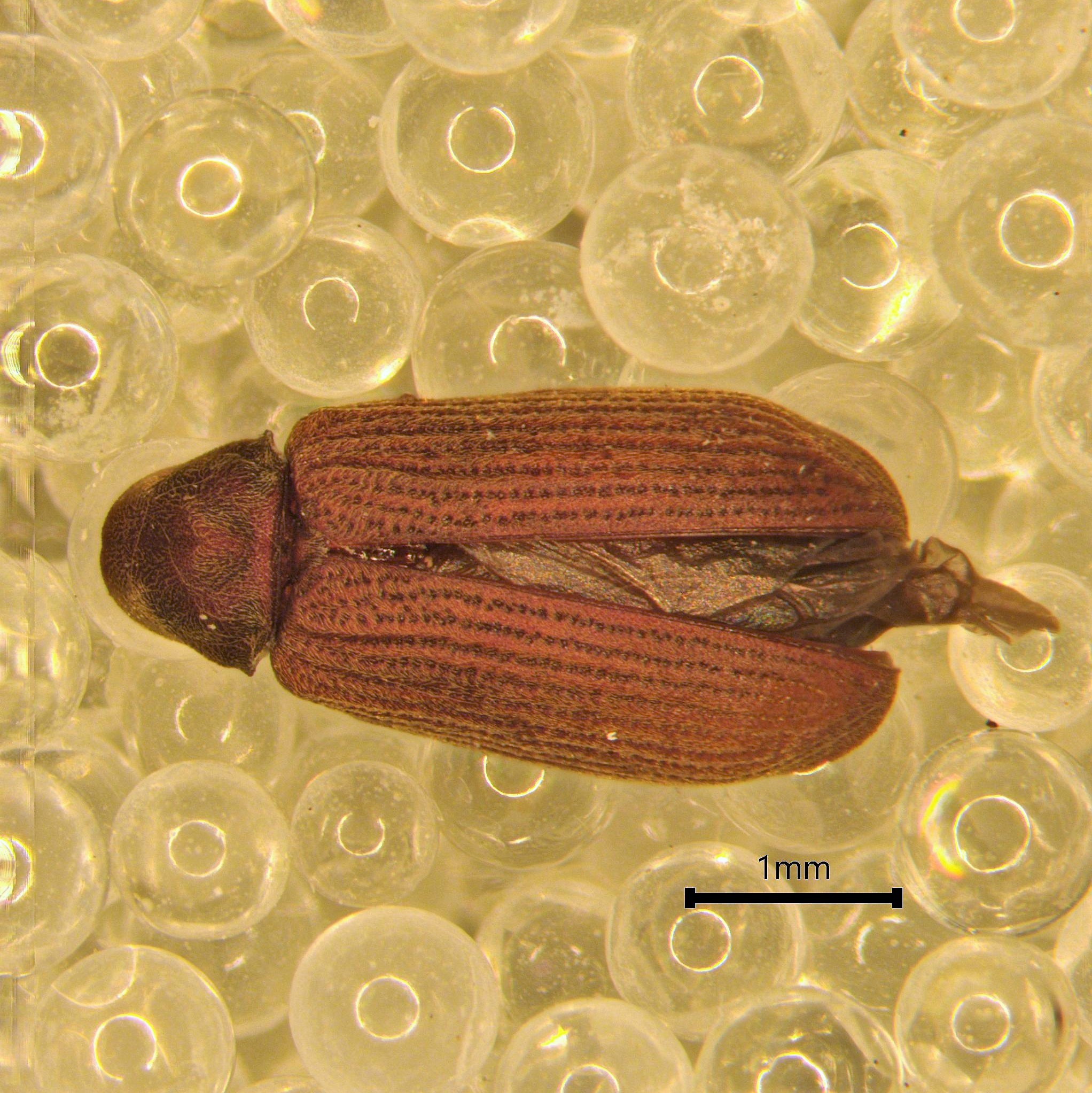 |
Figure 1: Top view of the biscuit beetle (left) and the common furniture beetle (right)
The common furniture beetle is generally slightly larger and darker than the biscuit beetle, but due to the wide variation in size and color within both species, these characteristics are not sufficiently reliable. The best way to distinguish the biscuit beetle from the common furniture beetle is to lay it on its side and look at the upper contours of the neck shield, the part where the head emerges. In the biscuit beetle, the top (in side view) of the head capsule is arched, while in the furniture beetle this arc forms a clear, almost right angle at the top (blue line in Figure 2). Both beetle species also differ in the length of the legs in relation to the antennae, the body hair and the dimple structure of the elytra, but these features can only be seen under high magnification (stereo microscope).
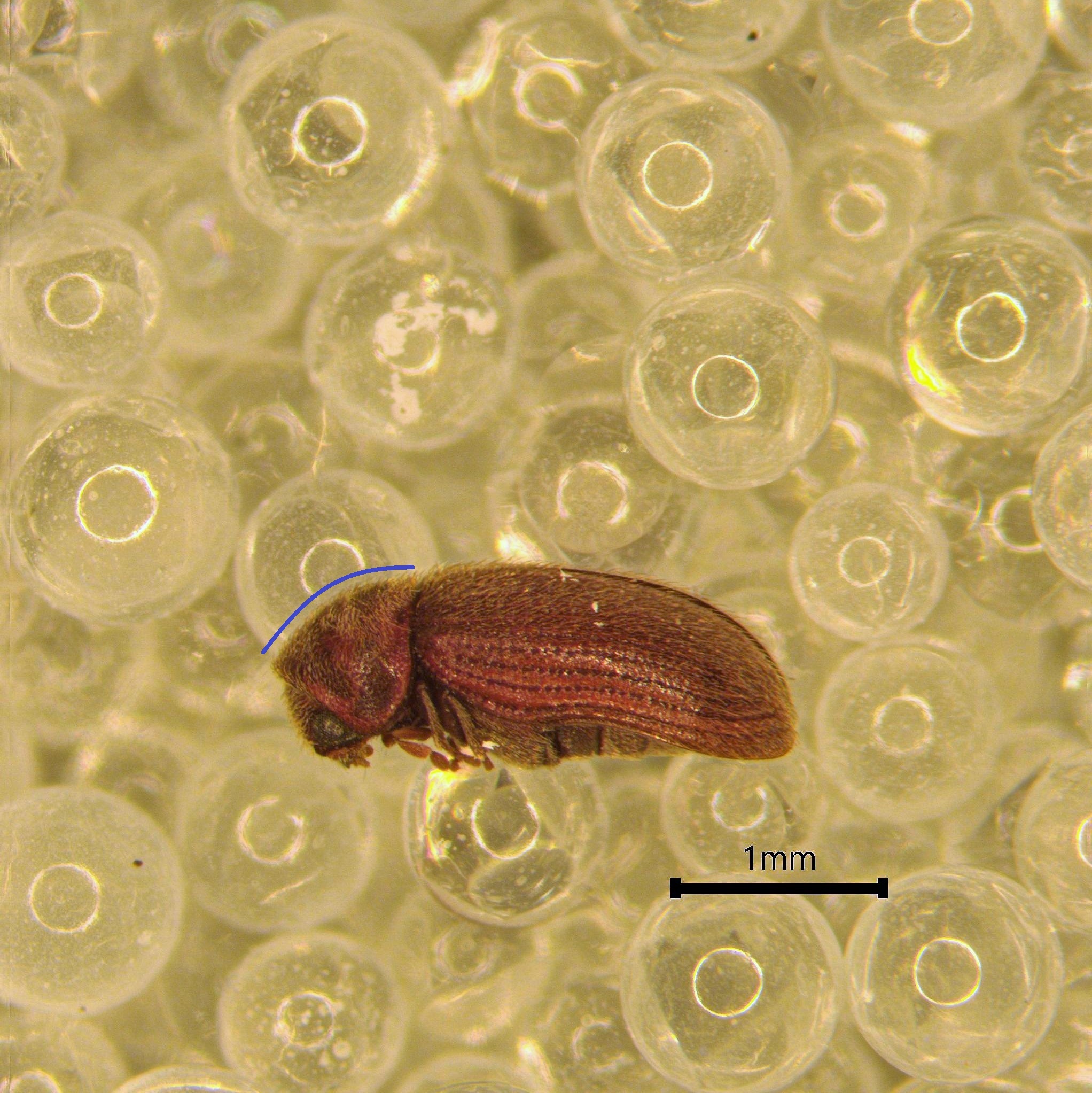 | 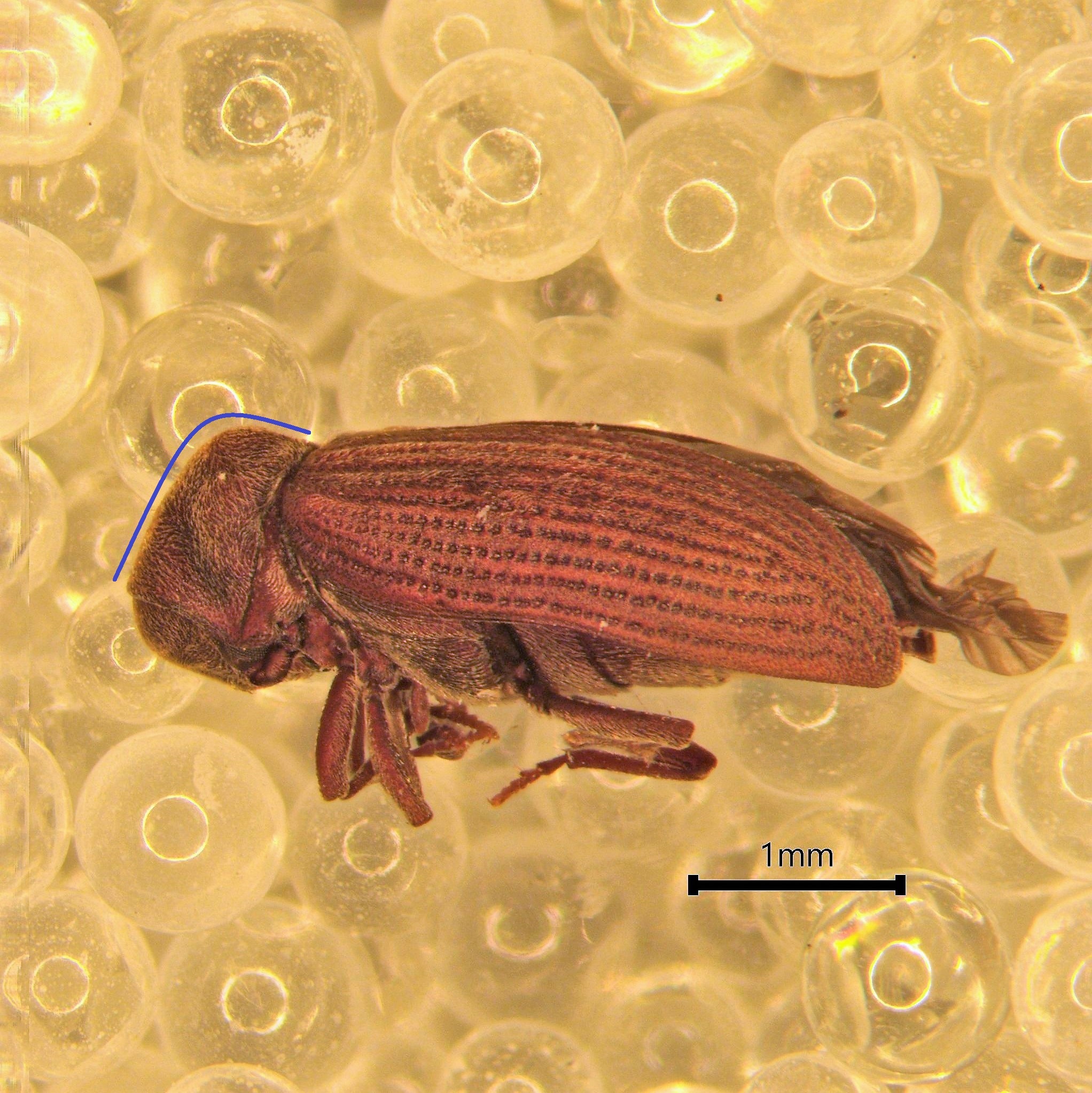 |
Figure 2: side view of the biscuit beetle (left) and the common furniture beetle (right); the blue line highlights the upper contour of the neck shield as the main feature to distinguish the two species
The common furniture beetle (Anobium punctatum) infests both coniferous and deciduous wood inside and outside buildings; the beetles emerge from the wood beginning in May. A sure sign of these woodworm beetles are the circular exit holes in the wood with a diameter of 1 to 2 mm. They can show up in the wood of the rafters, but also for example in old furniture (cupboards, chairs), chests, wooden art objects etc. If it is the common furniture beetle, then caution is advised, because the larvae of these beetles can cause severe damage in both treated and untreated wood.
How to get rid of the biscuit beetle
First the source of infection must be located: you must find the food source that the larvae use to develop into beetles. All possible food sources must be inspected for the presence of beetles and their larvae. Typical sources are cookies, bread, stock cubes, rusks, macaroni, pasta, cereals, flour, ... but the larvae can also be found in pet food, bird seed, and leftover bean seeds. Less common but possible sources are a bird's nest under the eaves, a cherry pit cushion, and even a plush teddy bear. Infestation is not limited to food products either. Building and insulation materials that contain plant fibers or seed residues are possible food sources, and so are the bindings of old books, which use a starchy glue. Modern synthetic glues are less susceptible to these insects.
Once you have found the source of infection, it can be either removed or the larvae can be neutralized by putting the contaminated food in the freezer (-18°C) for at least 24 hours. After removing all the infested foodstuffs from the area, it is a good idea to vacuum all the cupboards, including the seams and cracks, to eliminate the last few beetles. Store all non-infected food items are best stored in tightly sealed jars made of glass, hard plastic or metal. In the weeks that follow, continue to regularly inspect the cabinets, food supplies and the environment for remaining beetles. Adult beetles can remain alive for several weeks, even without a food source, so patience is required. Traps or lures for these beetles do not exist. The use of chemical pesticides indoors is absolutely not recommended and in this case will also have little effect. The only effective solution to get rid of biscuit beetles is to locate and remove the source of infestation.
